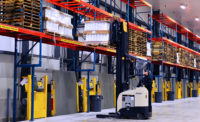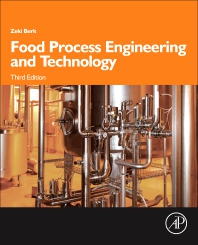Is blockchain the future of food safety?
When counting the concerns of the food industry, temperature control throughout the supply chain is just the beginning.

In an era where food recalls are a weekly occurrence, there is constant conversation surrounding food contamination and the steps to solve the ever-growing problem.
Refrigerated and frozen foods are particularly sensitive to recalls due to variables such as temperature, making monitoring processing times and exact location of shipments critical. What’s more is, recalls are a major threat to public health, and prove the importance of a system that allows suppliers to pinpoint the problem and avoid nationwide scares.
When counting the concerns of the food industry, temperature control throughout the supply chain is just the beginning. Consumers look to brands and government officials to ensure food will be ready and safe to consume upon purchasing. However, the global supply chain is larger and more complex than ever, and frozen and packaged food are still being shipped worldwide without proper tracking, thus increasing contamination risks.
To get a handle on food safety in today’s nuanced supply chain, food industry professionals are turning to technology like blockchain as a way to improve tracking and efficiency. With blockchain technology, frozen food suppliers can leverage data from each point in the supply chain to ensure regulations are being followed.
Where in the supply chain does contamination occur?
Food recalls continue to sweep the nation, leaving consumers and industry professionals unsure about what to do next. Contamination occurs mostly with common, high-demand food. Therefore, it can be difficult to predict what food will be next, much less find the root of the issue. According to the USDA, illness-causing bacteria can double in growth after just 20 minutes. This occurs when food with sensitive temperature requirements exceed 40°F.
Global supply chains are in place for food suppliers to maintain a stocked shelf, regardless of the season. However, temperature-controlled items are more likely to face contamination risk due to the length of travel. Long distance food shipments put both suppliers and consumers at risk for consequences surrounding food contamination.
Food suppliers must balance safe handling with the desire for stocked shelves. The World Health Organization, Washington, D.C., reports that over 200 diseases are caused by unsafe food, putting consumers directly at risk for illness. To get a handle on this, the food industry as a whole needs to begin looking at new practices for supply chain transparency.
Implementing new technology can help suppliers obtain helpful information and prevent potential issues. Supply and demand applications allow for elevated purchase forecasting — helping to track buying trends, and ultimately, eliminating waste. An approximate 2.7 billion pounds of meat, poultry and seafood is wasted each year in the grocery space, according to the Natural Resources Defense Council, New York. Not only can modern technology, such as supply and demand applications, work to save the industry money, but can also help companies cut back on unused food products taking up inventory space and prone to expiration or contamination.
The missing link in the supply chain—blockchain and ERP
Food recall and contamination issues can begin at any point in the supply chain, making it difficult to identify exactly where the issue starts. Potentially contaminated food usually causes suppliers to err on the side of caution, discarding more than necessary in an effort to lower the risk for consumer illness. However, with added technology, this process could be more cost-effective for food suppliers while lowering the number of units recalled. Not only will a reduction in recalls result in hundreds of thousands in cost savings; it will also build trust with key customers.
With food traveling long distances to make it to the final destination, shipment location is often unknown by suppliers for an extended period of time. This proves to be even more detrimental to the safety of frozen foods, considering temperature control as a main priority. With this, food suppliers would benefit from a transparent supply chain where they can track lot numbers and keep tabs on exact time and location.
Blockchain enables individual units of food to be recorded and identified by a transaction record that cannot be edited by any party. This enables suppliers to keep track of the products being shipped by time and location, moving the shipment process along at a quicker pace without missing information that could lead to contamination. The accessibility of this information helps suppliers manage time more efficiently, and reduce the cost attributed with loss of product and contamination risk.
Technology such as an enterprise resource planning (ERP) solution can work alongside blockchain by tracking specific lot numbers, giving suppliers a look into the supply chain to keep a tab on each shipment — all while simplifying the detection of future problems. Revisiting frozen foods and temperature control, ERP and blockchain technologies can help regulate temperatures by ensuring the food supplier is aware of each change, ultimately avoiding the risk of placing contaminated foods on the shelves.
With consumer demand steadily increasing, the food supply chain will only get more complicated. To get a grasp on the growing, complex supply chains in the food industry, suppliers need to keep contamination risk in mind and adopt new tracking methods.
Applying a solution that is capable of seeing the entire supply chain while also recording each step along the way is the best choice when looking forward at the anticipated growth in the food industry. Blockchain and ERP technology work hand-in-hand to promote streamlined processes and eliminate potential contamination risk.
A wide range of advantages result from applying these technologies. A more manageable supply chain will provide financial benefits to the food industry, all while diminishing public health risks and maintaining stronger customer relationships.
Looking for a reprint of this article?
From high-res PDFs to custom plaques, order your copy today!








